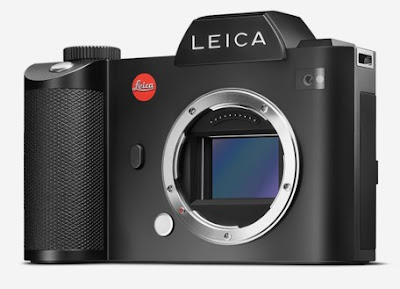2016 New Leica SL (Type 601) Review
2016 New Leica SL (Type 601) Review - Sony has commanded the full-outline mirrorless exchangeable lens camera space with its A7 arrangement since it dispatched two years prior - not horrendously hard, as Sony's had the main cameras in that space as of not long ago. Enter the Leica SL, an intense professional arranged model with a couple of downsides.Leica SL (Type 601) Review
As is really ordinary for a Leica, the camera costs generally twice as much as its closest rival, the Sony A7R II, at $7,450 for the body (£5,050 in the UK) and $4,050 for the most readily accessible lens (£3,150), the Leica Vario-Elmarit-SL 24-90mm f2.8-4. (No costs for Australia have been declared yet, yet the US body value proselytes to AU$10,280, while the lens works out to AU$5,590.) The value looks significantly less steep in the event that you contrast it with full-outline dSLR models with quick constant shooting, then again.
New Leica SL (Type 601) Review
 |
| New Leica SL (Type 601) Review |
Picture quality
The sensor and processor are the same as the Leica Q, so you'd anticipate that the photographs will seem to be comparable. The SL's photographs and recordings are by and large tremendous in everything except low light. In the event that you need your out-of-the-camera JPEGs to look incredible you have to change the default settings in light of the fact that they'll cut excessively much shadow and highlight point of interest, or on the other hand you have to under/over presentation high-(brilliant) and calm (dim) scenes. You likely need to underexpose high difference scenes too, in light of the fact that it's moderately simple to recuperate shadow detail yet not as much for the highlight point of interest. That is really run of the mill, however.
 |
| New Leica SL (Type 601) Review |
Leica's tasteful for low-light photographs is to safeguard point of interest to the detriment of clamor; at the end of the day, low-light JPEG shots look a ton grainier than those of different cameras, however they likewise don't get understand that over-smoothed look. On the off chance that you don't care for it, however, you can expand the in-camera clamor diminishment.
Leica's DNG crude documents save shading better (normally) and confront programming clamor diminishment extremely well through about ISO 12500. Past that the pictures are usable, contingent on the scene. You don't increase much in the method for point of interest by handling the crude at high ISO sensitivities, however.
See also nikon samsung canon sony
The shading parity is nonpartisan and precise in both our crude and JPEG test shots, yet in genuine sunlight the skies in a few photographs - it would appear that it happens in brilliant shots - get pushed to cyan. I haven't seen skies like that leave a genuine camera in years. They look flawless in the crude photographs, however.
I think Leica is performing more moire diminishment in the JPGs than it did in the Leica Q, and to even the DNGs are enhanced in that regard (however the altogether different lenses could represent it too). The JPEGs are only somewhat gentler than the DNGs, and the DNGs have altogether more moire, however I couldn't recognize any in my photographs from field testing, only the part of our test scene intended to demonstrat to it. I think a more honed lens (as the 50mm f1.4 will most likely be) may resolve somewhat more, however, bringing about more moire.
 |
| New Leica SL (Type 601) Review |
The camera's video 4K looks better than average also. At the end of the day, you ought to diminish the difference in case you're shooting in splendid conditions and need great out-of-the-camera footage, since it cuts the highlights and shadows as with the stills. The one inherent profile it has, Leica V-Log L, is one of the flattest profiles I've ever seen, and the camera needs a "review" highlight like the A7S II for working with it. On the other hand, it safeguards the highlights not surprisingly to grade.
I didn't test recording through HDMI, on the other hand, which bolsters 4:2:2 10-bit. Inside, it's the run of the mill 4:2:0 8-bit. It's conceivable that the higher piece rate work process will improve employment protecting highlight point of interest. Be that as it may, the low-light video wasn't almost as great, to some extent in light of the fact that it appears to utilize the same commotion diminishment settings as the stills, so there's a considerable amount of clamor jitter. The A7S II certainly beats the Leica SL in that regard. At the point when shooting in HD, the SL utilizes the whole sensor.
While it will be getting an electronic shade in a pending firmware overhaul, the central plane screen obviously delivers inclined verticals in quick moving subjects (like a train).
Post about 2016 New Leica SL (Type 601) Review
Watch now Video a simple review about Sony RX10 II
Comments
Post a Comment